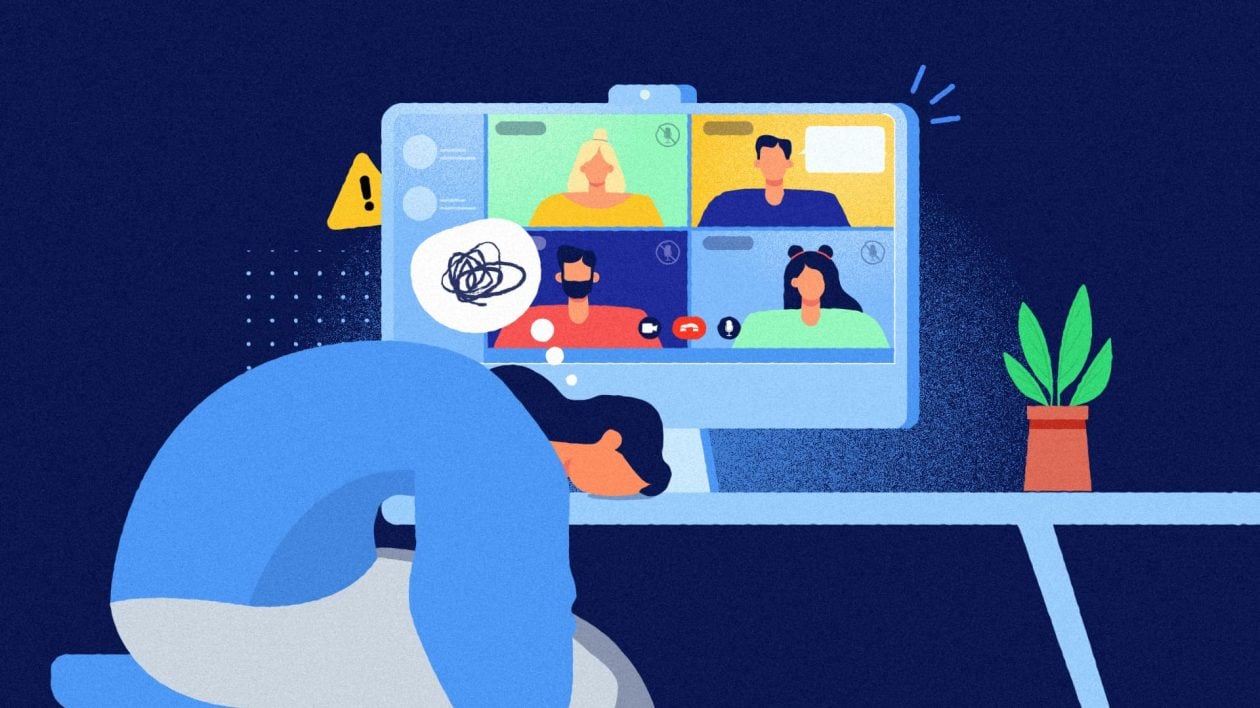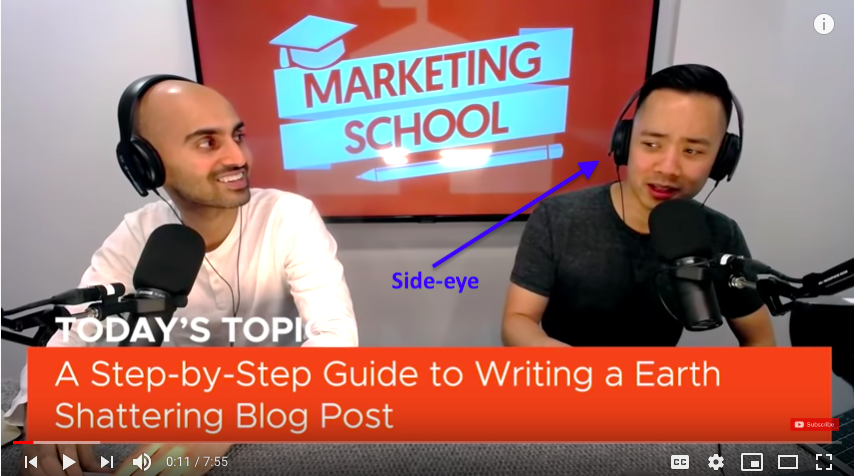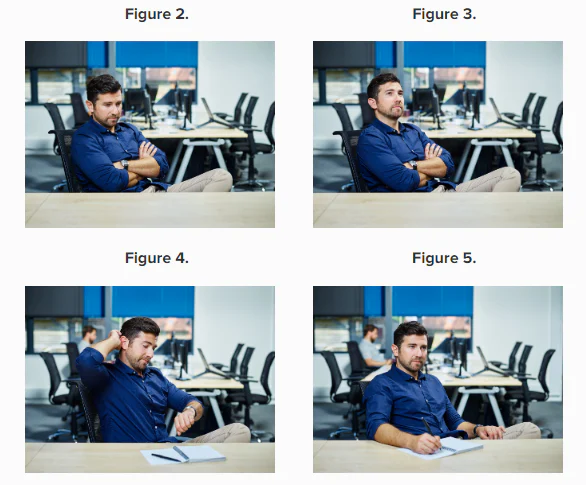These days, everyone does remote podcasting recording. That’s what the Internet is all about, after all.
But have you ever asked yourself what makes some podcasts skyrocket in popularity while others just kind of drift away?
Is it the content? The marketing? Or something more intangible, like energy and chemistry? While all of those carry weight, we’re aiming our crosshairs on the most humane aspect of podcasting: doing a podcast in person versus virtually.
Let’s dive into the advantages that come with in-person podcasting and why it’s almost always superior to remote podcast recording.
The Marketing School Podcasters
Take, for example, the co-hosts of the Marketing School Podcast, Single Grain’s own Eric Siu and Neil Patel from NP Digital:

They were fortunate enough to get together for an in-person podcast after doing virtual recordings for three years. When they met in person to record a podcast, they felt a renewed sense of energy that they simply couldn’t replicate in their online sessions. It completely boosted the way they interacted with each other.
When they met face to face, both Eric and Neil noted a significant shift in the content’s quality — especially in the storytelling department. They weren’t just recording, they were engaging, vibing off of each other. And, in doing so, creating richer narratives.
Why? Because they were right there, sharing the same physical space.
Think about the best conversations you’ve ever had. Weren’t most of them in person? There’s a natural flow to a face-to-face interaction that a digital interface just can’t replicate. It’s not rocket science, it’s just basic human connection 101.
Say Goodbye to Digital Fatigue
Are you familiar with the term Zoom fatigue? You know, that sluggish feeling you get from back-to-back online meetings and virtual interactions.
Now think about the energy you experience when you’re in a room full of people, seeing more than just their head and shoulders, and feeding off their collective energy.
Night and day, right?
Now, it may partly depend on how you are energized on an individual level, but for the most part, online meetings can be draining. In-person interactions do the exact opposite — they energize you.
By the way, if you must continue to interact online, check out this article 9 Proven Ways to Reduce Zoom Fatigue When You Just Can’t Get Out of a Meeting:

The Relationship Multiplier
Digital communication tools have made it easier than ever to connect with people around the globe. That’s true. But there’s something ineffable about in-person interactions that cannot be replaced by pixels and Wi-Fi signals.
Podcasting offers a unique window into this truth. When you’re sitting across from someone — seeing their facial expressions and noticing the nuance in their voice or the twinkle in their eye as they discuss a passion project — the connection transcends mere information exchange. It becomes a genuine relationship, a bonding experience that can often lead to long-lasting friendships or professional partnerships.

One might argue that online interactions also offer opportunities for meaningful dialogue. But there’s something tactile about real-world experiences that simply can’t be replicated digitally.
The Nuances of Body Language
The beauty of face-to-face interactions lies in the myriad of non-verbal cues that communicate so much more than words ever could:
In podcasting, where the auditory medium naturally emphasizes spoken content, you might think that body language and facial expressions are less relevant. But don’t be fooled.
A huge part of creating synergy in a podcast involving more than one person relies on how those individuals are able to interact with each other. The moment you throw internet latency, bad picture quality, out of sync audio and visual, and other technical hiccups into the mix, it can severely suppress the opportunities for quick-witted banter and the ability to pick up on things like sarcasm.
Ever noticed how someone leaning forward can draw you in, making you more engaged and focused on what’s being said? Or how a relaxed posture might signal comfort, ease or agreement? These cues add layers to a discussion that are hard to perceive through an audio recording alone. They add richness, contouring a conversation with hidden subtexts that are both intriguing and instructive.
In fact, non-verbal cues are so important to overall understanding that the FBI has experts in this field:
When you’re sitting across from your podcast guest or co-host, these little cues provide real-time feedback that you just can’t get through a screen. They tell you when you’re onto something engaging or perhaps when you’ve hit a nerve. This immediate feedback allows for course corrections on the fly, making the conversation more dynamic and responsive to the moment.
When a conversation takes place in person, it’s as if an entirely new, unspoken language comes into play. And this “silent symphony” has a profound impact on the quality, depth and even the outcome of a discussion.
The Entertainment Value of In-Person Podcasts
In-person podcasts have a greater propensity to be binge-worthy. Not only does the conversation become more riveting for the speakers, but it also becomes more enjoyable for the listeners, especially when the podcast is video recorded.
When you think of any talk show, they’re basically video-recorded podcasts that have a flair of entertainment beyond just words. It’s the reason why shows like Between Two Ferns with Zach Galifianakis thrive off both the dialogue and the visual aid:

Although talk shows are formatted differently than podcasts, the added value of visuals still rings true for podcast listeners.
From One Creator to Another, Here’s What You Should Do
There are plenty of reasons that podcasting in person is still vastly better than remote podcasting recordings — at least for now in our current age of technology. Maybe one day streaming technology will become so advanced that all these points we’ve brought up will have solutions in a virtual setting, but not yet.
Until then, take these tidbits with you when weighing the quality of your own podcast output:
- Upgrade Your Storytelling: The narrative style is richer when you can react to each other’s emotions and body language.
- Beat the Fatigue: Consider the weariness your audience feels after long hours on the computer. Offer them something that feels more ‘live’ and refreshing. In-person podcasts also change up the scene so people aren’t seeing the same old backgrounds over and over again (for those podcasts that are also on video).
- Strengthen Your Network: In-person podcasting can turn guests and collaborators into long-term partners or friends.
- Non-Verbal Communication: Enhance your podcast’s depth by making room for unspoken but palpable human elements.
- Elevate Entertainment: Make your podcast not just informative, but also a delightful experience to consume.
So, the next time you’re setting up your podcasting schedule, consider the untapped potential of in-person sessions. It might just be the golden ticket to taking your podcast from just another show to a memorable, transformative experience for both you and your listeners.
If you’re ready to amplify your brand’s voice, Single Grain’s podcast marketing experts can help!👇
For more insights and lessons about marketing, check out our Marketing School podcast on YouTube.







